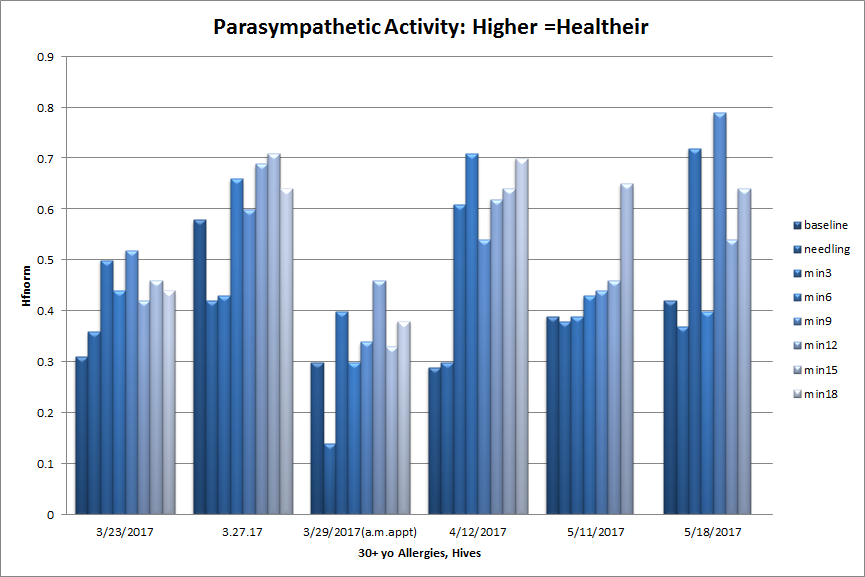Case Study: Allergies, Hives and Morning Appointments Jo.Wo.
Kristen Sparrow • May 18, 2017


I wanted to just to do quick blog post to illustrate a few things I track when I do Heart Rate Variability (HRV) Monitoring.

Case: young woman with seasonal allergies, who then had some episodes of hives.
In the data above, each column is 3 minutes of data.
1. On 3.29.17, her overall stress levels are higher. This was a morning appointment instead of afternoon. It is important to compare data from similar times of day.
2. Notice the treatment on 5.18.17. there are pronounced decreases at minute 3 and 9. These down drafts of stress levels are a sign of potential “signalling”, which could be responsible for the physiological healing shift.
3. Something else that interests me is that allergy patients seem to have a blunted response to needling compared to say, migraine patients. This is a general observation, so not “scientific” but perhaps significant?
In this same data, this is the patient’s parasympathetic activity, or “rest and digest” activity. Again on 5.18.17, you see spikes in the parasympathetic activity, a sign of active and hopefully successful treatment. You can also see an overall trend toward increasing parasympathetic activity, or “rest and digest” a sign of health and resilience



